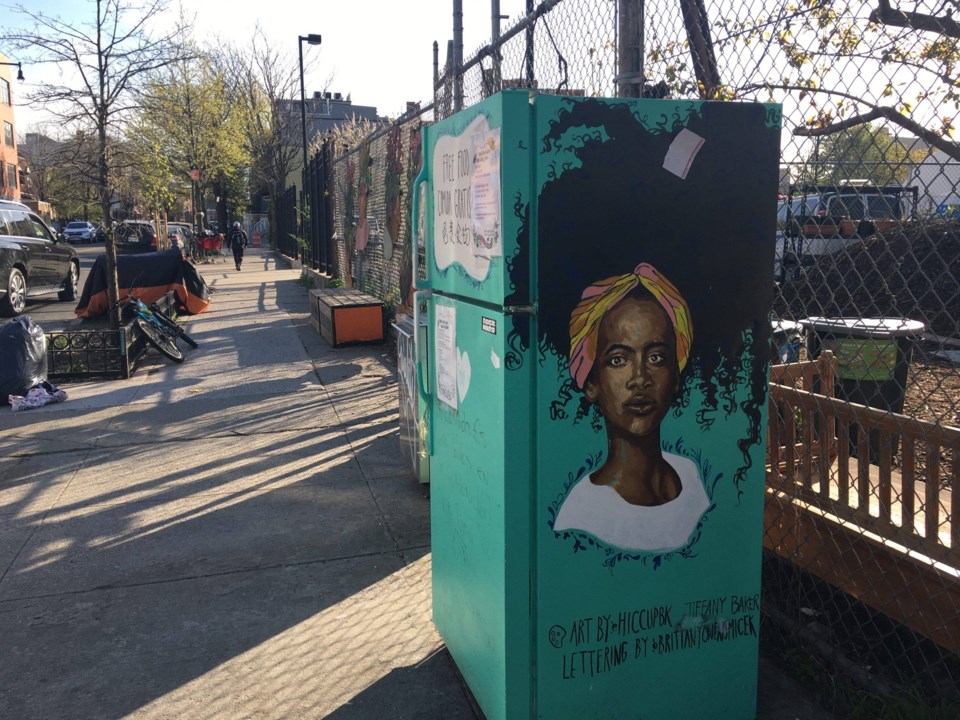Most landlords move to evict when their tenants fall behind on rent.
But when the pandemic hit New York City last year, Beatriz Perez's boss Antonio Vaca had a different idea: He wanted to give his tenants free food.
"He said this would be something nice to do, we could feed the tenants and the other neighbors around who might be without a job," Perez said.
Vaca had seen how people in New York were starting to put fridges outside stocked with free food, and he wanted to do the same.
At the time, Perez was working for Vaca at his Ridgewood company Fenix Car Service. She connected with the anarchist network In Our Hearts, which helped her get a fridge donated, and it was up and running by August.
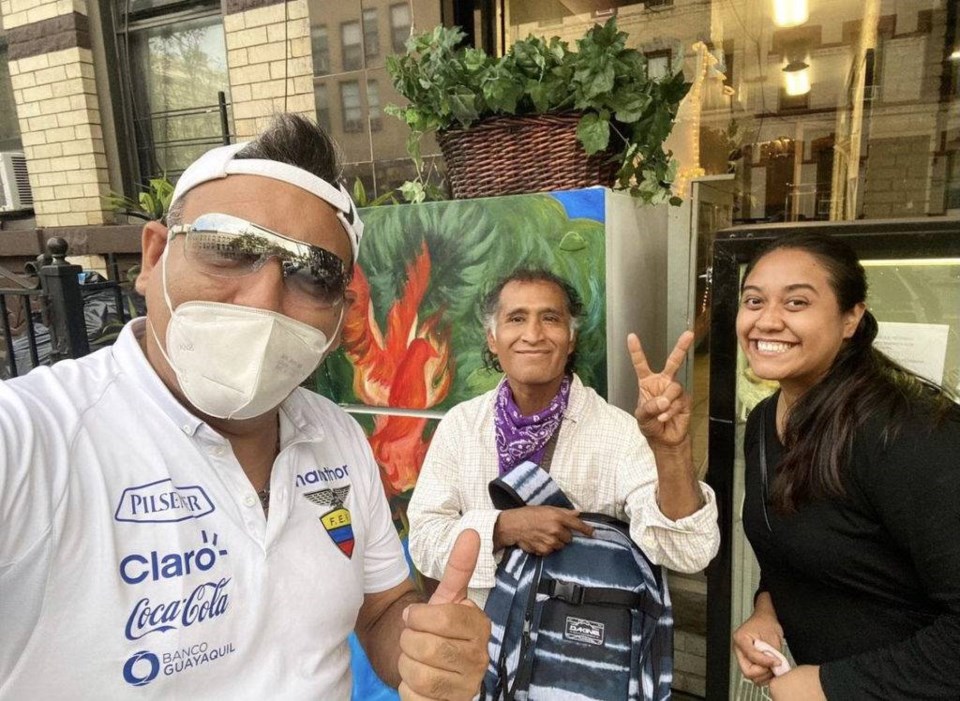
The second fridge came a couple of weeks later, bought with money pooled by the 10 remaining Fenix drivers. But they soon saw even that wasn't enough.
"Sometimes, within an hour, maybe less, it was gone, two fully stocked fridges," Perez said.
Over the last year, the rise of community fridges have become a very conspicuous symbol of the need, and food insecurity, of so many New Yorkers.
And as the movement has grown, it's also become a gateway to thousands of volunteers wanting to provide mutual aid in their community.
"I fell in love with the fridge movement," Perez said. "Mutual aid is awesome, it's given a new purpose to my life."
The rise of the friendly fridge
In the past year, the humble fridge has crept from the shadows of private kitchens to the streets, becoming an unlikely hero of the pandemic and a common feature of New York City's urban landscape.
Like heroes, they even look different than they do in their day jobs, with artists giving each of the "friendly fridges" its own paint-job and personality.
Since the first outdoor community fridge popped up in Bed-Stuy in February 2020, fridges stocked with free food have grown through the pandemic to become an entire "fridge movement," inspiring others to start their own nationwide and beyond.
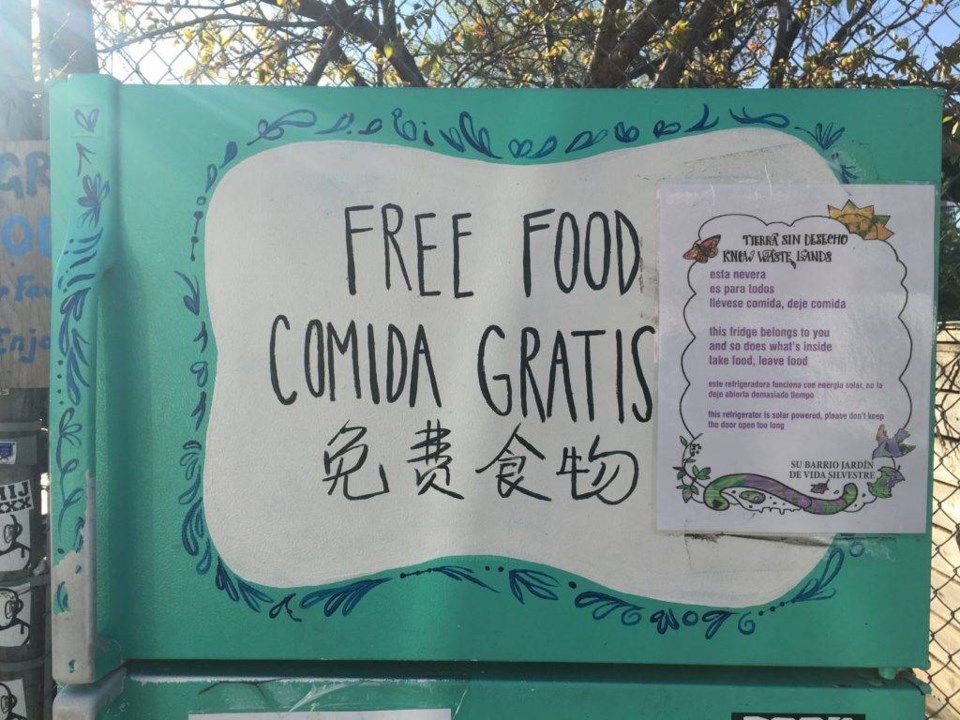
The city has gone from having no outdoor community fridges in January 2020, to now having more than 100.
The brightly-painted fridges offer comida gratis — free food — to anyone who opens their doors. Neighbors are involved in stocking, cleaning and maintaining each and every fridge. All are volunteers, with thousands now estimated to be involved through mutual aid networks.
The first fridge
Most of New York and New Jersey's fridges are connected by the New York City anarchist network In Our Hearts, which helps fridge organizers share supplies and drivers.
In Our Hearts organizer Thadeaus Umpster said the network had been redistributing food waste since the early oughts, but the first outdoor fridge came about when they were looking for ways to store donations on days they weren't giving it out.
He managed to score a free fridge on Craigslist, and on Feb. 8 last year, a friend helped drop it to his house in Bed-Stuy. When it wouldn't fit inside, he decided to plug it in but leave it outside packed with a food from a recent donation.
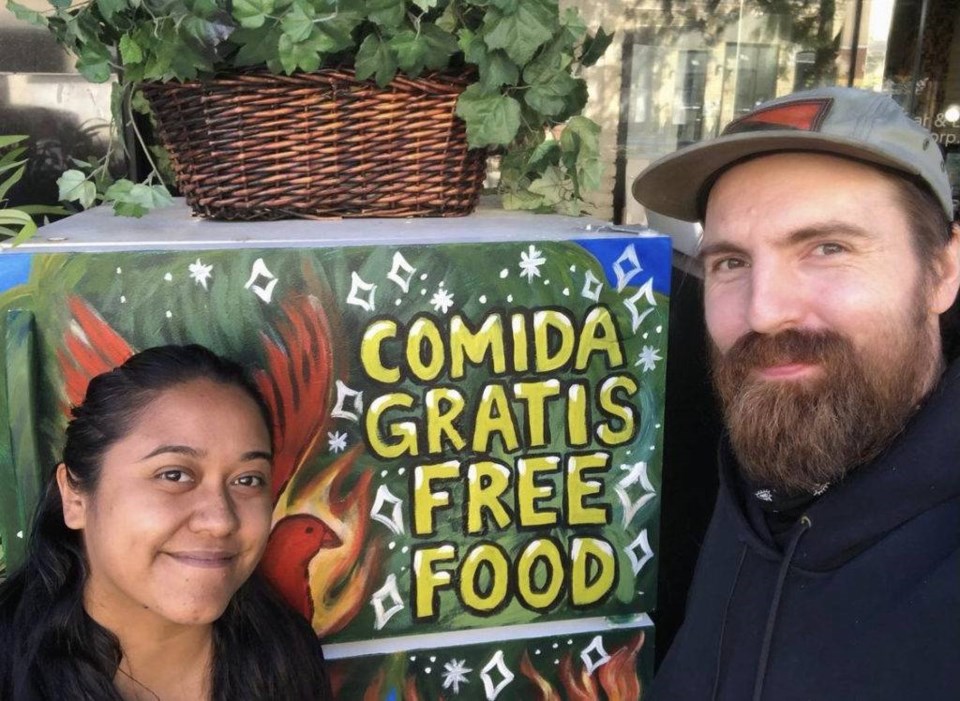
"We painted a sign that said 'free food' and a heart, so people would know why, and kept it that simple," Umpster said. They posted a pic of the fridge to social media, but had no idea what was going to happen next.
"We didn't realize it was going to blow up and be so inspiring to so many people and communities all over the place," Umpster said. "Its been crazy."
Someone posted a picture of the fridge to Craigslist. A Bushwick resident saw it and started the Evergreen Fridge. Then one popped up in Crown Heights. Then another in Harlem. The movement grew rapidly, with many people who weren't able to work -- musicians, massage therapists, tattoo artists and others -- able to dedicate themselves to it full time.
Now, with more than 100 fridges in New York, In Our Hearts has also been helping people set up fridges in cities like LA and Boston, and even internationally in Canada, and as far afield as New Zealand.
The fridges came at a time that people needed more help than ever. Pantries and church distribution centers had shut down due to the pandemic, people had lost their jobs, many were ineligible for government assistance.
"You had the fridges there for people that had been forgotten about, or who had fallen through the cracks," Umpster said.
Anarchist movement
As an anarchist collective, In Our Hearts has helped coordinate and share resources between the growing number of fridges, but they don't hand out rulebooks.
"We're not about centralized authority, we want people to be inspired and do what they will with it," he said.
The movement is as much about feeding each other as it is about decreasing food waste. The food in the fridges come from many places: grocery stores, bodegas, restaurants with leftover food or food that isn't going to be sold. Schools with leftover school lunches.
"Nothing is wasted," Umpster said, saying people will take everything down to your loose soy sauce packages. On the other end, he's also seen caviar and foie gras in fridges.
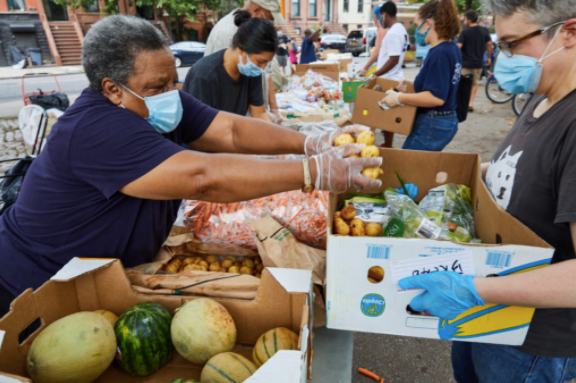
When people ask them what they can buy from the store to stock the fridge, they encourage them instead talk to the workers at the store to see what might be about to go to waste. "Instead of people being a donor they become an organizer."
Umpster points to the fridge model -- and mutual aid in general -- as being very different from charity when you get up close. Charity reinforced the status quo of "rich giving to poor." Mutual aid is about changing the relationship between neighbors.
He said, for him, that looks like a neighbor who offered to mend a rip in his jeans. It looks like the women who take raw ingredients out of the fridge, make meals out of them for those who can't cook, and put them back.
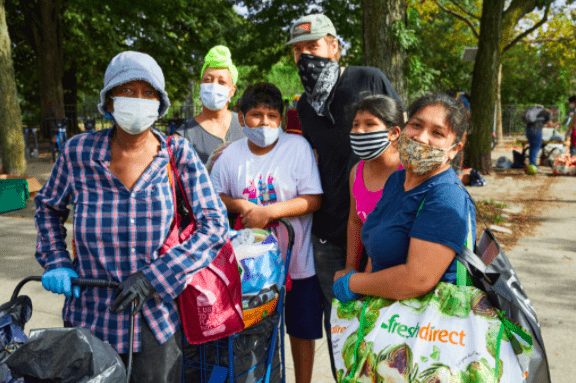
Now, more than a year after plugging in that first fridge, Umpster is still pretty much working on the fridges full time.
"It's hard to stop," he said. Last week, they coordinated the distribution of over 3,000 pounds of food on Tuesday, 7,000 pounds on Wednesday and 3,000 pounds on Thursday, solely in Brooklyn.
"I think this is going to continue to grow as a movement, it will be normalized to waste less food and distribute it to people in need more so than it is."
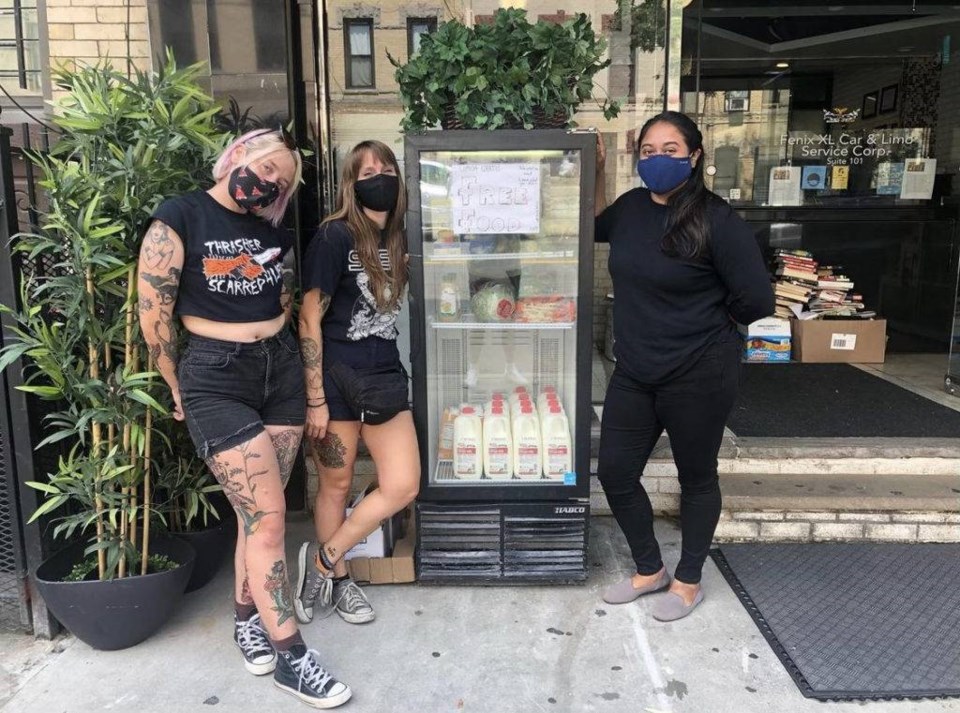
Meanwhile, in Ridgewood, Vaca's passion for feeding his community grew to the point of him handing his car service business over to his daughter, so he could start a free market. Perez said he's been feeding his community full-time ever since.
"Every day he wakes up thinking about the food he's going to collect for the free market," Perez said.
Now his tenants are back on track with rent, they even help stock and maintain the free fridges themselves.
"It's given us a new purpose in life," Perez said. "We used to serve the community with transportation, but now we can give so much more."

